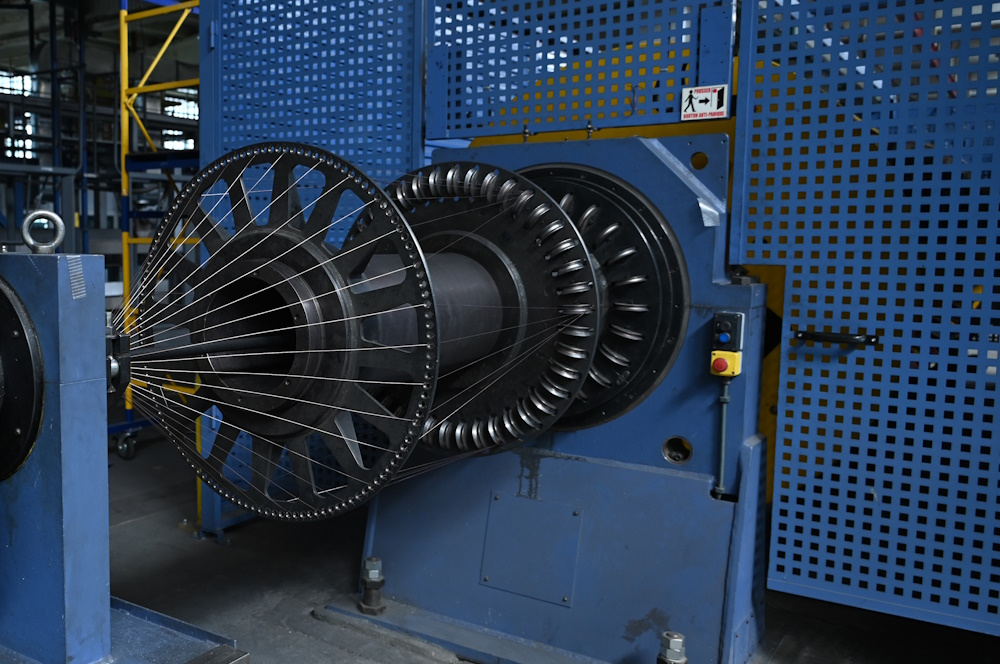
For wires and cables requiring extra protection against harsh and damaging conditions, armored cable eliminates the need to run conduit and simplifies installations. However, if the armoring equipment twists the sheathing material unevenly, it can ultimately compromise the cable’s ability to withstand punishment. In order to ensure consistent twisting, or lay, of the protective sheathing, the speed of the cable’s rotating elements must be controlled with precision.
Here’s how differential gearboxes can drive rotating elements in cable armoring equipment with exceptional precision plus efficiency and space savings versus traditional approaches.
How Cable Is Armored
When an armoring machine winds the metal cover, the wire or cable travels linearly through an aluminum or steel shaft. A coil rotates as forming rolls shape the metal material and wrap it around the wire. The forming rolls must lay the material accurately, and the coil needs to provide the right tension to unwind the sheathing material. The consequences of inconsistent twists include poor mechanical stability, failure to meet the application’s cable diameter requirements or even noncompliance with international standards. Correct armoring avoids these problems and depends on the precise control of the forming roll’s speed relative to the linear speed to ensure a uniform twist.
A designer may choose two separate motors — one for braking and another for driving — to power each rotating element. Each must be sized and will occupy significant space. However, a differential gearbox is a more effective and efficient option for this application. While the differential must be sized to support the full power, the motors only need to input the power that the cable or wire requires — driving power minus the braking power. This means the differential allows a smaller motor to do the same job and, depending on the chosen speed ratio, provides precise speed control.
A differential is also ideal for controlling the coil’s tension. Although it is possible to fasten clutches directly to the coil, this approach often requires slip rings for clutch activation and adds maintenance expenses to the assembly.
Redex offers a differential gearbox family that is particularly well-suited for wire and cable manufacturing equipment such as armoring machinery. SR Series planetary differentials have a unique compound epicyclic gearing design that incorporates two sun gears within the casing along with two gears for each planet axis. Redex’s patented assembly process ensures equal load sharing between the planet gears, so as planet gear assemblies are added the torque capacity of the differential increases. The design and construction gives the SR a wide range of ratios from -1 to 260 and optimal torque capacity. SR Series differentials are available in 10 sizes.
Reduce Reliance on Motors
When it comes to forming and twisting in wire and cable equipment, there’s no better way to drive the rotating elements than with a differential gearbox. Differentials featuring an epicyclic gearing design allow designers to reduce motor power, requiring just one or two small motors to drive rotating mechanisms. This results in greater accuracy along with power and space savings.
Be sure to speak with a Redex sales engineer to help you select and size the right differential gearbox for your wire and cable equipment.
For more information about Redex SR Series differential gearboxes, visit our product page.
